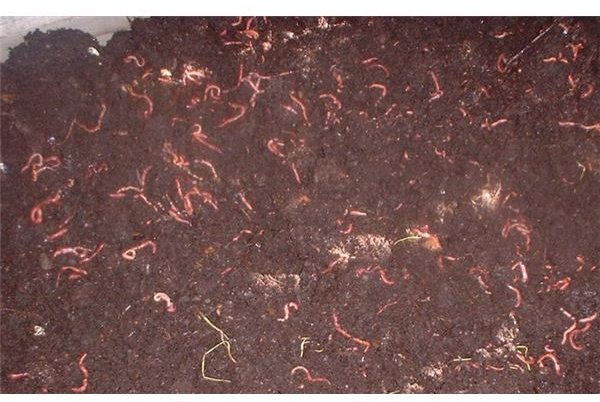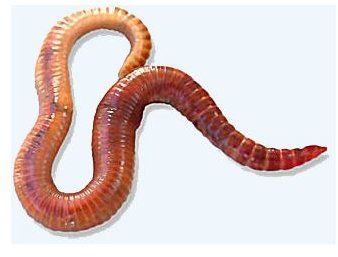Red Worm Anatomy & Digestion: A Biology Study Guide
Overview
The red worm is sometimes known as a red wiggler due to their reaction at being handled. It is a manure worm, meaning that it will eat almost any form of organic matter. Red worms are one of the most common worms found in commercial production. They belong to the family Lumbricidae. This family contains 220 different species of worms. In this red worm biology lesson plan, the focus will be on the digestive process although the other biological function of this worm will be covered as well.
Red Worms

Basic Red Worm Anatomy
The red worm is a fairly simple organism. This said, it is striking at how well developed the digestive, circulatory, muscular, and excretory systems are. Most of these systems are contained in the “head”, that is within the first few segments of the body. The exception is the digestive system.
Every red worm has an external feature that is easily identifiable. These are the ridges or segments that occur along the organism. Red worms have a total of 95 segments. These segments perform different functions.
The red worm is designed for burrowing through soil. The head also acts as a shovel. Small retractable hairs reside in every segment of the body. The sole function of these hairs is locomotion. Burrowing is further facilitated by the secretion of mucus on the skin.
Each red worm is a hermaphrodite. Although it contains both male and female organs it needs a mate to reproduce. The result of reproduction is a cocoon containing anywhere from two to two hundred baby worms. These hatch in approximately three weeks. The average cocoon contains four baby worms.
Red Worm Digestion
The red worm ingests all forms of organic matter through its mouth as it burrows through the soil. On the surface it will ingest plant matter in any form of decomposition and other surface residues. The ingested material travels through the digestive track, going through the crop, the gizzard and then the intestinal tract. Finally, waste material is passed out through the anus.
As ingested material travels along the digestive pathway, it is mixed with digestive enzymes. The purpose of these enzymes is to release critical nutrients from the ingested material. These nutrients include sugars, amino acids, and smaller organic organisms such as protozoa, bacteria, fungi, nematodes, and other microorganisms. These smaller molecules are then absorbed by the intestines. Any matter not used by the body is excreted out through the anus. The excrement is the worm castings referred to in the article Our Worms Ate Our Garbage.
A Quick Overview of Human Digestion
Human digestion is very similar to that of the red worm. Digestion starts in our mouths, travels to the stomach, the intestinal tract and completes the process at the anus. Saliva and digestive enzymes break down the food humans consume into smaller molecular parts that is absorbed through the intestines. Waste is excreted out through the anus.
Dissecting a Red Worm
Earthworms and red worms are extremely close from an anatomical perspective. A good video to view on how to dissect an earthworm can be found on YouTube. The same procedure can be followed to dissect a red worm.
Study Questions
-
How are the digestive systems of red worms and humans the same? How do they differ?
-
How can red worms live on trash created by humans?
- Why do you think worm castings are good for soil and plants?
This post is part of the series: Worm Composting Project
This is a series of articles based on a vermiculture or worm composting project. The articles include how to set up a project in your classroom or school and lesson plans to expand the learning experience.
